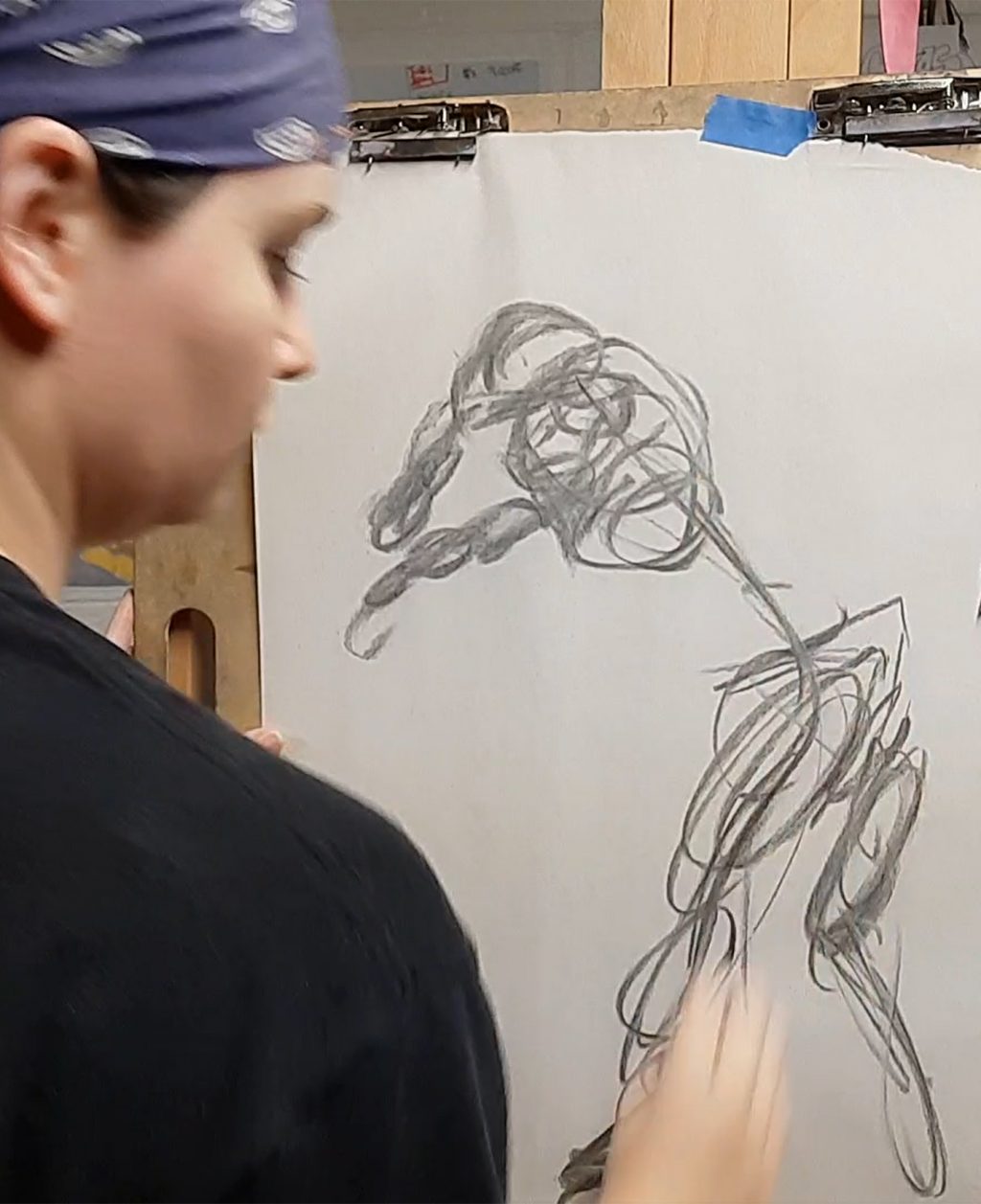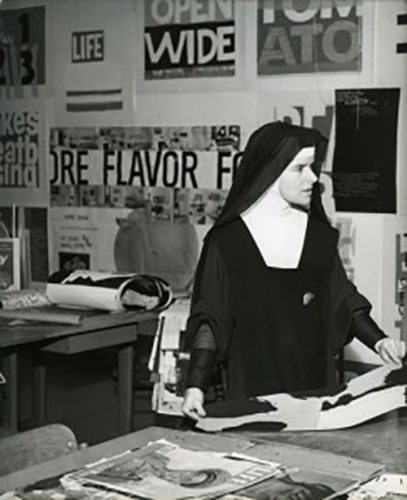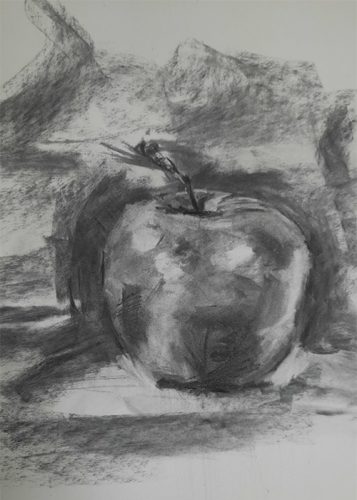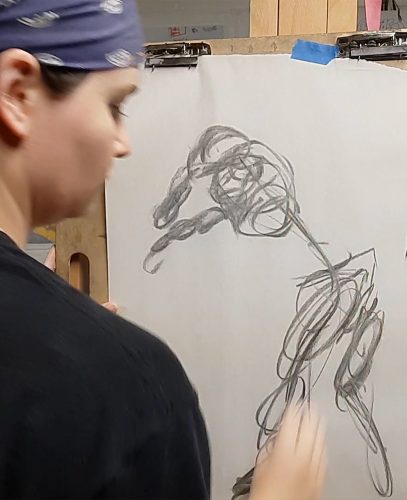
Lessons from Looking

Corita Kent teaching with LIFE Magazine, photographed by Mary Anne Karia in 1965. https://www.wbur.org/radioboston/2015/11/20/corita-kent
The day-to-day of indoor living due to inclement weather and a pandemic can be at times both monotonous and maddening. Days and weeks run together. We are already one-third of the way through the semester—my last semester—though it feels like it has just begun.
In my research for my thesis project, I’ve been meeting with and reaching out to women artists and friends. One of my friends recommended the book “Learning by Heart: Teachings to Free the Creative Spirit” by Corita Kent and Jan Steward. Corita Kent was an artist, activist, educator, and formerly a nun of the religious order the Immaculate Heart of Mary. This book is a collection of writings and lessons by Kent and testimony from her former students about her teaching.
There is little nuance when your surroundings remain the same. While reading the lessons of Corita Kent, I realized that it doesn’t have to be the case if we learn to look. In one of the exercises in “Learning by Heart” called Looking at Shadows she states, “For so many years we have been learning to judge and dismiss – I know what that thing is – I’ve seen it a hundred times – and we’ve lost the complex realities, laws, and details that surrounds us.” The exercise is to look at the shadows in your room and to keep looking. Eventually you realize that you will never be able to see all of them – they will continue to change, appear, and disappear. If we take a good look at the world around us, there is so much to discover. Our perception is limitless.

This is a timed 10-minute apple that I drew with my students.
I tell my Drawing 1 students not to depend on what they think they know when drawing from observation; Not to focus on lines, but the value shapes of what they are actually seeing; I tell them to squint and distort their vision so that the object is abstracted and to step back from their drawings often; I tell them that it will take time before their drawings resemble what they observe – keep adding and subtracting and changing as you see things; I ask them not to try and make a finished product right away, but to move around their drawing constantly – to work on the whole and not just one part.

This is me giving a 30-second gesture demonstration for my Drawing 1 class. It is fast!
One of the biggest challenges for students who are new to traditional methods of drawing is gesture. Gesture is a drawing exercise that is fast and loose. It is a drawing that quickly captures what the subject is doing. It doesn’t need to make sense or be accurate, and it is messy! Gesture is furiously drawing without looking away from the subject and without lifting the drawing utensil. I ask my students to work on large 18×24” paper so that they have to move as they draw, using their entire body and the entirety of their page. Gesture drawing asks the artist to relate to their subject through movement and emotional response. It is not a finished product or a pretty picture (a lot of new artists strive for perfection with every drawing). Kimon Nicolaides in his book “The Natural Way to Draw” says, “You must discover—and feel—that the gesture is dynamic, moving, not static. Gesture has no precise edges, no exact shape, no jelled form. The forms are in the act of changing. Gesture is movement in space.” Gesture requires the artist to see and connect with their subject in a different way. I also have my students do extended gesture studies so that they can continuously see and understand what they are looking at—testing where things are in relationship to one another, proportion, and composition. It makes the artist inseparable from the subject.
These techniques carry into how we experience the world around us in our day-to-day. We perceive things differently and appreciate them more in our experience through seeing and creating. Art enriches our lives in both making and sharing, and in how we choose to live. It grounds us in the present. It connects us to what we see and teaches us how to see. Look around you and keep looking. As Corita Kent says, “Do it. Look at the shadows.”
